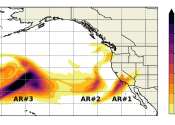Planting trees in grasslands won't save the planet—instead, protect and restore forests
Tree planting is one of the nature-based solutions being used to offset greenhouse gas emissions. Trees absorb atmospheric carbon dioxide. Many of these tree planting projects target Africa's rangelands (open grasslands or ...









